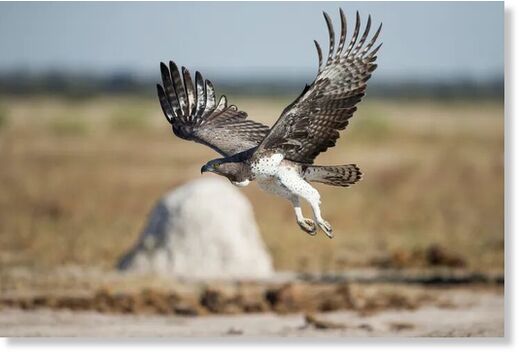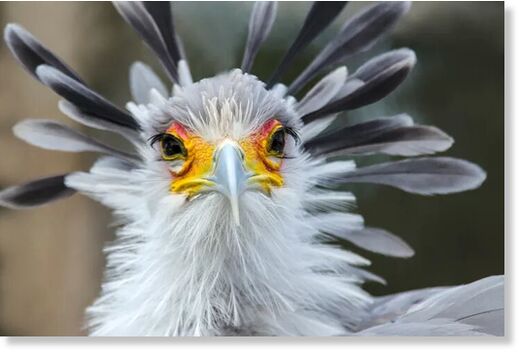Populations of 10 species with a body mass of more than 1.3kg have plummeted by 80 per cent over a period of 30 years, with those of another 11 species halving during the same time period.
As a result, the African hawk-eagle, designated as Least Concern by the IUCN Red List, should be reclassified as Critically Endangered, while Beaudouin's snake-eagle should go from Vulnerable to Critically Endangered, reports the paper in Nature Ecology & Evolution.
Bateleurs, martial eagles and secretarybirds all suffered 80 per cent declines too.
The research was carried out by counting raptors along road transects in Mali, Burkino Faso and Niger in West Africa, Cameroon, Kenya, Botswana and South Africa.
One of the co-authors of the report, Dr Darcy Ogada, Africa program director at the Peregrine Fund, says the scale of the declines are shocking but not surprising given the pace of development in countries such as Kenya and on-going droughts impacting prey availability.
Roads and transmission lines both have a massive negative effect. Roadkill attracts carrion eaters such as vultures and eagles, which can then become victims themselves, while birds get electrocuted on the lines or collide with pylons.

This did take place when Shaw and Ogada published a paper revealing catastrophic crashes in vulture numbers in 2016. "That attracted a lot of funding into looking at ways of bringing back populations or protecting them better," Shaw says.
Whether that happens with this latest paper remains to be seen. "The priority list in Africa consists of rhinos at the top, elephants right next to them and then lions and other big cats," Ogada says. "My instinct tells me that close to 95 per cent of all funding for wildlife conservation goes to those top layers."




Reader Comments
to our Newsletter